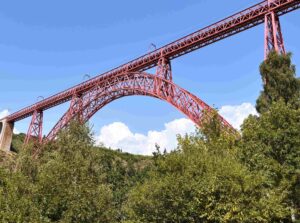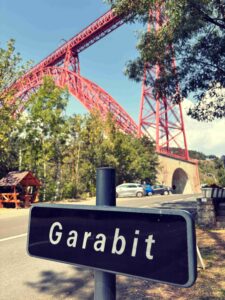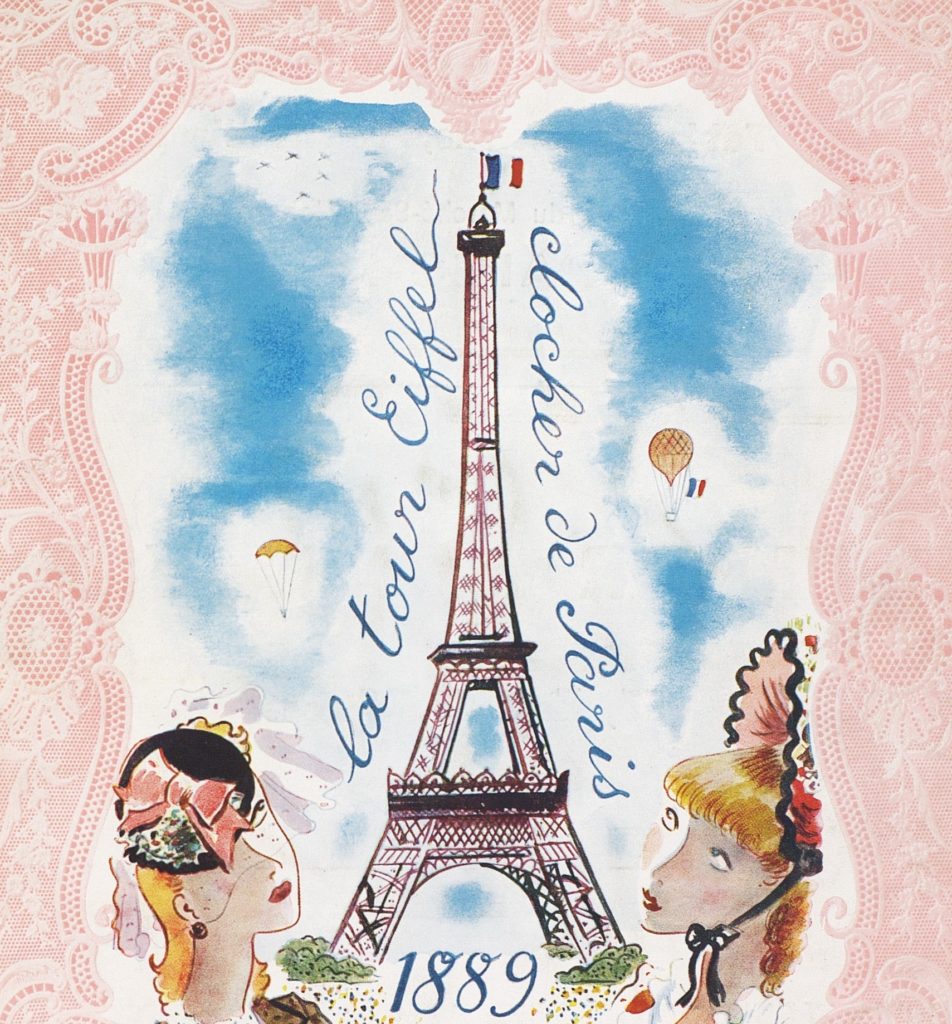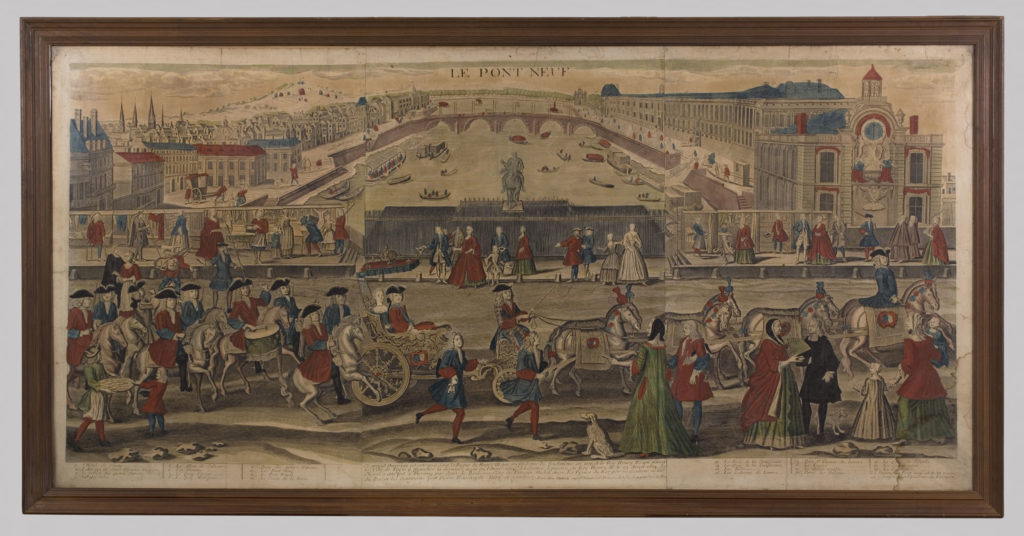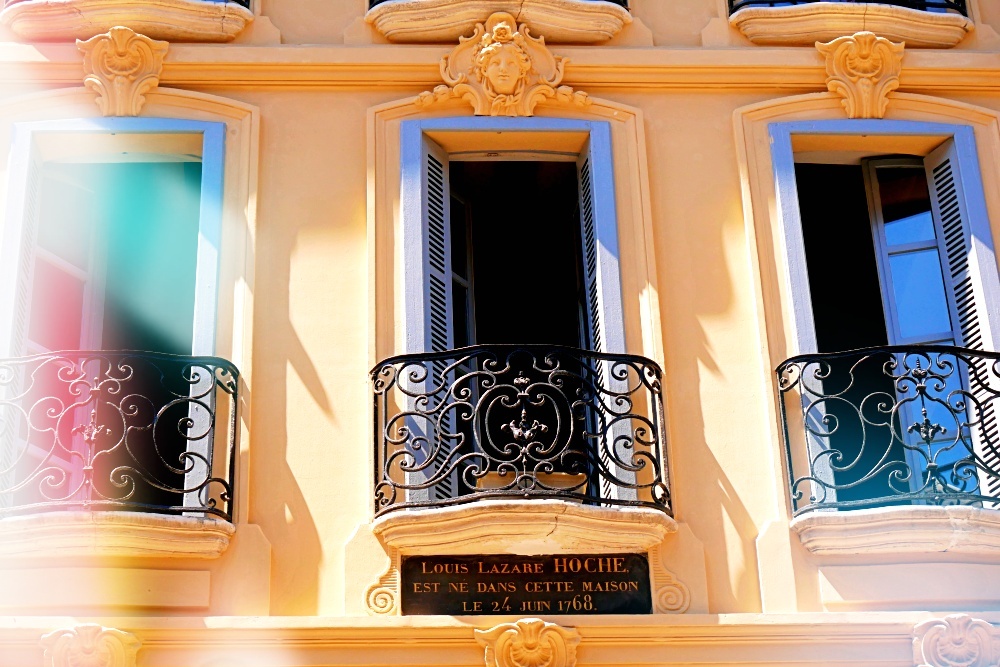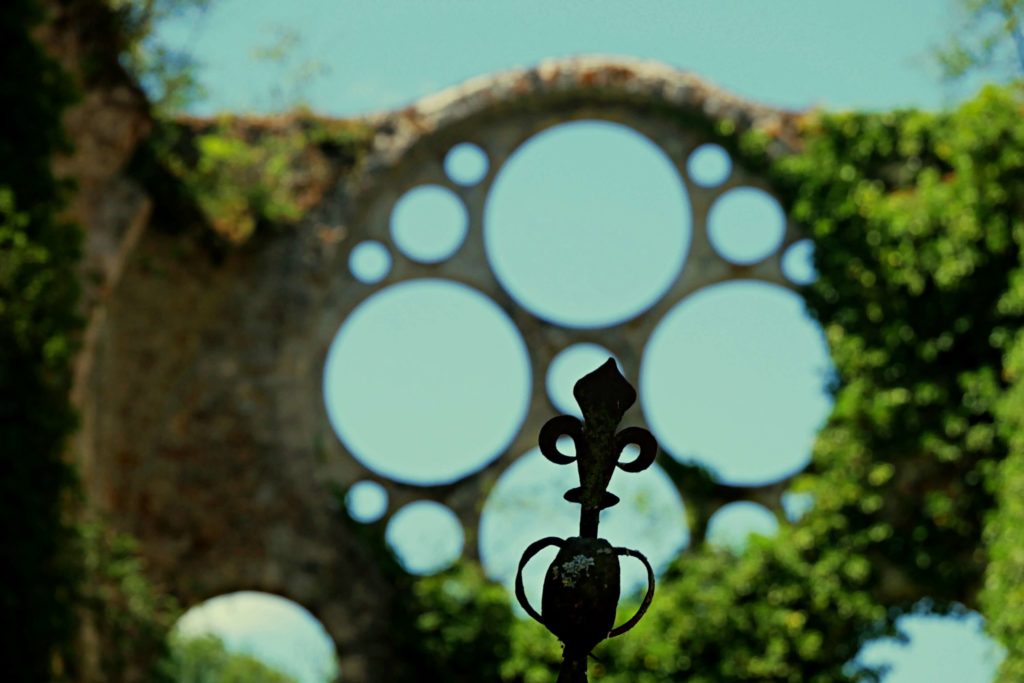Before Gustave Eiffel built towers, he built bridges. There are hundreds of steel bridges in France, Portugal, Brazil and even China, designed and constructed by his engineering company in the second half of the 19th century. Towering 120 metres high over the Truyère river, the Viaduc de Garabit is perhaps the most marvellous of them all.
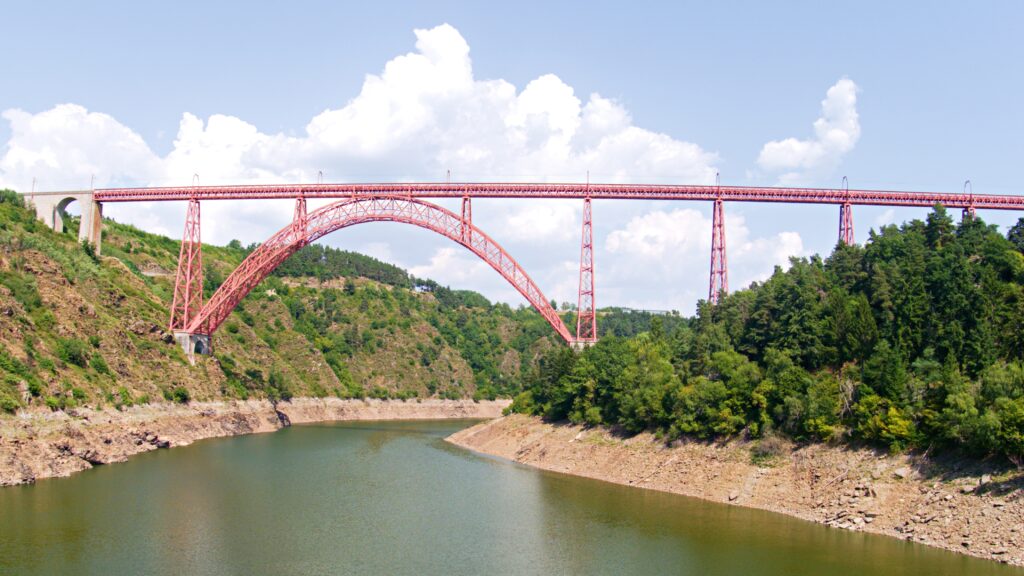
In the heart of France, in a valley formed long ago by the rushing Truyère River, sits the tiny village of Garabit. For hundreds of years the fields awoke to the cow herders calling “Garo biau” in their native language Occitan, hence the old name Garraby or Garrabie. Crossing the river was dangerous here, with its fast waters surrounded by steep cliffs. As the railway extended its steel network all over France in the mid 1800s, in the mountainous and winding Massif Central the trains needed to get to the other side of the Truyère. A plan was made using steep climbs, tunnels, turnings and small bridges, at a cost of over three million francs. But maybe there was a different way?
“For centuries, the Massif Central presented itself as an irreducible core, closed in on itself, wild, far from the main communication routes. With the emerging industrialization of the 19th century, the rise of the railways, the era of progress which wanted the free movement of goods and people, it was decided to break this isolation”.
Léon Boyer, born in 1851, an engineer for the public works department, was assigned the task of finishing off the rail line which traversed the valley between Marvejols and Neussargues. Not satisfied with the complicated and meandering plans already in place, he believed both time and money could be saved and was determined to construct a momentous steel bridge over this narrow ford at Garabit. Spending the harsh winter of 1878 at Garabit, with deep snow and temperatures below -17 degrees, measuring and analysing, Boyer designed a bridge he was sure was the best way forward.
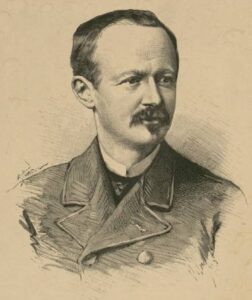
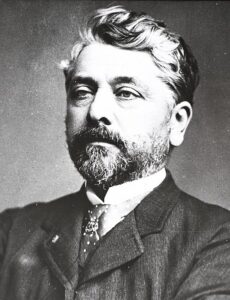
The design was remarkably similar, if not identical, to the Maria Pia Bridge. This immense wrought iron railway bridge which spans the Douro River in Portugal, was designed and constructed in 1877 by Gustave Eiffel. Boyer openly acknowledged his bridge was inspired by the up-and-coming engineer, and in July 1880, Gustave Eiffel’s engineering company, by now famous for its bridge designs, was given the contract to build the Viaduc de Garabit, using Boyer’s plans.
Within several months the tiny hamlet of Garabit had grown to the size of a large village, with wooden huts for the more than 400 workers from the Cantal and Italy, stone buildings for administration, lime stores, stables, a post office and a school. The local farmers had never seen such industry; it was an enormous feat of organisation. Granite travelled from a quarry 10km to the south to construct the huge bases; this took two years. At the same time, the iron pieces for the bridge were forged in Eiffel’s factories close to Paris, and when they arrived in Garabit, heat-mounted rivets were used to join the pieces. This technique, known as hot riveting, would be used several years later for the Eiffel Tower. A visiting reporter from Paris described the construction site as a scene from Dante: “Whistling steam machines, grinding winches, ceaseless hammering and everywhere men at every height and in every position”. Safety nets averted major catastrophes but there was one death, on 15 March 1884 when a worker lost his balance and fell onto the wooden service bridge below.
“I remember four or five trips I made to Garabit, with my parents or other people from home, because there were many of us going from Saint-Flour to Garabit. Everything was a source of astonishment for me, starting with the countless wooden houses – the cabooses – lined up along the road, where the 200 or 300 men of the company were housed. With what curiosity my sharp child’s eyes followed these men perched on scaffolding at dizzying heights! I felt a shudder when I saw them on the edge of the abyss or suspended in the void; there were the safety nets, of course, but… I heard the rhythm of the hammering of rivets, the blasts of the horn or bell by which certain orders were transmitted, the whistling of the steam engines, pumping water from the Truyère, or grinding mortar; I stopped, as if frozen, on the side of the road, to watch the heavy iron trucks pass by, pulled by 6 or 7 horses, and which came in one journey from Neussargues to Saint-Flour – 31 kilometres. Not in one journey, no, because there were inns along the way, and you can imagine that the carters did not avoid them. Ah! They were the good old days for those inns. I believe the wine distilled there at that time would have powered a mill for several days…”
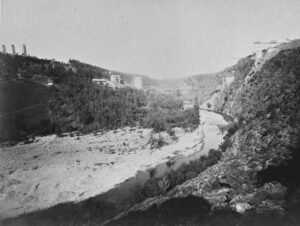
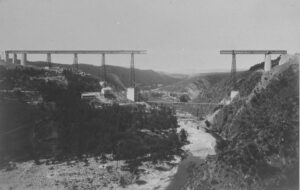
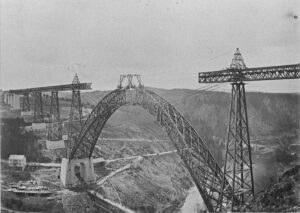
The Viaduc de Garabit was finished in a remarkably short time, considering its complexity. The immense arch was begun in June 1883 and less than one year later, on 26 April, 1884, it was complete, both curved sides joined in perfect symmetry. Local farmers and villagers, officials and workers, waved colourful flags and sang La Marseillaise until the national anthem echoed in the valley as the arch became one. Four years in construction, and well under budget, the village of Garabit would be changed forever by the magnificent bridge, a work of art as much as an iron railway structure. It would be another 4 years before the first steam train took its maiden voyage across the Garabit Viaduct. On 10 April 1888, a heavy 75 tonne locomotive hauling 22 coaches slowly inched its way high across the Truyère river, watched by hundreds of onlookers. The bridge moved only 8mm, the exact amount of displacement Eiffel had predicted.
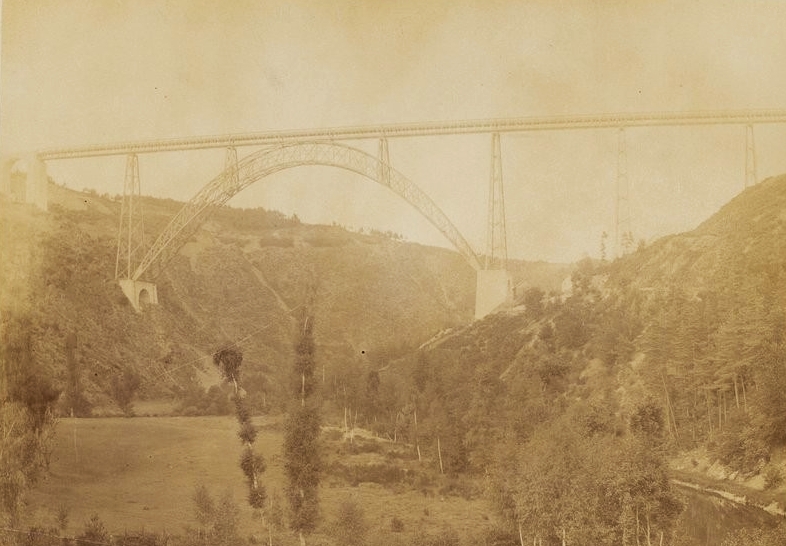

“Its height above the river would shelter your Notre Dame cathedral and your Bastille column one above the other”, M. Valadier, watchman of the Garabit Viaduct from 1915 – 1939 and one of its most loyal supporters.
By 1929 the age of steam trains was over, replaced by electric trains. And in its most momentous change, the Viaduc de Garabit was given a makeover in the 1990s and painted a brilliant “Gaughin red”. Léon Boyer continued to build bridges for several years before he became director general of works on the Panama Canal, but sadly he died there of yellow fever in 1886. Gustave Eiffel would go on to build one of the most famous and iconic structures in the world in 1889.
Related post: Surprising facts in the history of the Tour Eiffel
The Garabit Viaduct is located in the Cantal depatment, around 15 km from Saint-Flour. There is a small cafe at the foot of the bridge, on the D909. The best view of the bridge is on the other side of the river where there is a small lookout. The ruins of the Château d’Alleuze are only a short drive away and both attractions can be visited in one morning or afternoon. Enjoy the winding roads!
